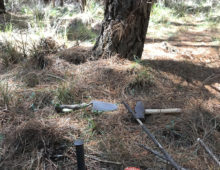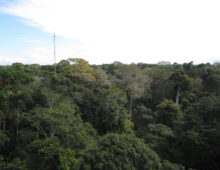Soil Aggregate as a Biogeofunctional Island
Soils are one of the most valuable resources for our nation, sustaining fiber, food and energy sectors. Soils harbor a diverse set of microbial communities that is three times higher than all other environments combined, but we have yet to develop a framework for microbial community assembly in terrestrial systems at spatial scales that are ecologically-relevant for microbes. Aggregates constitute the physical microstructure of the soil, influencing drainage, nutrient levels, and biogeochemical cycling. We propose to study this system using the soil aggregate as an unit for microbial community processes and functions. [Read More]

